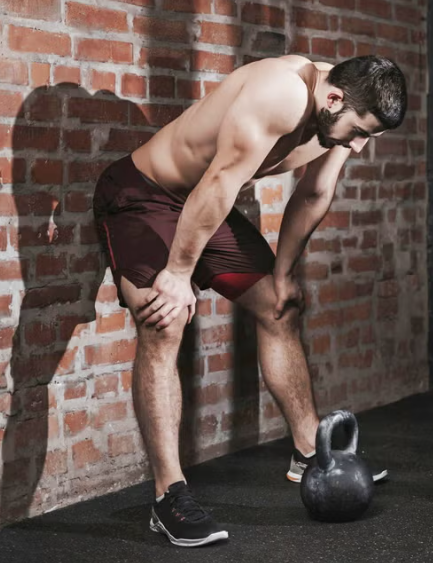
Stop Jumping Between Programs: Stick to One for Better Strength Gains
The internet has revolutionized the way we connect and access information, including in the world of strength and conditioning. It’s a fantastic resource that allows us to learn from experts around the globe, including renowned coaches like Boris Sheiko, despite living in different countries. However, with this access comes a downside: the flood of self-proclaimed experts on social media, offering countless fitness programs and advice, often without a deep understanding of the science behind training.
In my experience, many strength athletes—both beginners and elite lifters—tend to hop from program to program, hoping to find the “secret” that will unlock better performance. If you’re one of those who finds themselves constantly switching, then this article is for you.
A successful strength program must adhere to certain principles. First and foremost, it should be tailored to your specific goals. If you’re a powerlifter, for instance, spending time on exercises that don’t contribute to your squat, bench press, or deadlift is unproductive. Programs should also create enough of a training stimulus to trigger muscle growth and prepare your nervous system to handle maximal loads, a concept known as the overload principle.
The key to consistent progress is increasing training volume and intensity over time. I often hear lifters say, “Sheiko didn’t work for me” or “I got injured doing Sheiko.” The problem isn’t necessarily the program itself—it’s that the program may not have been suited to the individual’s needs. It could be that the volume or intensity was too high or too low, leading to inadequate progress or poor recovery.
Determining the right volume and intensity for an athlete is no easy task. Each person has a unique ability to recover, influenced by factors such as genetics, sleep, nutrition, and stress. Two athletes with similar body types, strength levels, and experience may have vastly different recovery capacities. That’s why it’s important for a coach to evaluate what an athlete has been doing before prescribing a new program. A coach who doesn’t consider an athlete’s past training history is simply guessing, and that’s not an effective approach.
To help determine appropriate training volumes, I rely on the Russian Strength Classification chart, which categorizes athletes based on their total in the big three lifts. This serves as a helpful starting point, as higher totals indicate greater muscle mass and more developed nervous system capabilities. However, this is just the beginning. From there, I analyze the athlete’s recent training, looking at average daily, weekly, and monthly volumes, as well as the intensity they’ve been lifting at. This process, while time-consuming, is critical for ensuring future success.
This is also why generic, one-size-fits-all programs rarely work. While they may benefit some, not everyone needs the same volumes or intensities to progress. The principle of individualization is essential. A program should not only include the right volume but also allow for technique improvement. If an athlete’s technique is poor, it’s necessary to adjust the intensity to account for this. Focusing on improving form can help make future progress more sustainable.
In my over ten years of experience in strength training, I’ve encountered many coaches who offer unsolicited advice without understanding the scientific principles of overload. For instance, I’ve received Excel spreadsheets from coaches proposing training volumes that were drastically lower than what my athletes were already doing. This kind of misjudgment can be detrimental to progress.
The best programs strike a balance between competition lifts and variations. Sheiko, for example, recommends about 20% competition lifts and 60% variations like pauses. I’ve adopted this approach because it’s based on sound reasoning. You need enough variation to continue making progress, but also enough work in the main lifts to improve technique and skill. If you overdo variations and neglect the competition lifts, you risk losing specificity and hindering your progress.
If you keep doing the same exercises with little variation, your body adapts, and you stop making progress. This is known as adaptive resistance. To combat this, adding variation forces your body to relearn and refine movement patterns. For example, Louie Simmons at Westside Barbell uses a 4-week cycle where his athletes only use the safety squat bar. After returning to the straight bar, the movement might feel off, but the process of relearning helps make long-term progress.
Strength training is full of ups and downs, but the goal is to make sure each peak is higher than the last. Coaches achieve this by continually assessing and adjusting the program to meet the athlete’s evolving needs. When choosing a coach, it’s easy to be tempted by someone with impressive personal records. However, what works for one athlete may not work for another. While lifting experience is valuable, the ability to apply scientific principles to training is what truly matters.
I may not be the strongest lifter, but with my background in strength training and a master’s degree in the field, I understand how to apply training principles effectively. I also make sure to train as hard as I ask my athletes to. I’ve been working with the same coaching staff throughout my powerlifting career because they understand these principles and know how to adapt them to my needs.
Over the past year, Sheiko has analyzed my training volumes and intensities, and I trust the process. To reach my strength goals, I know it will take time. Switching between different coaches, changing equipment, or altering bar grip won’t magically make me stronger. The key is consistent work and a coach who understands my strengths and weaknesses as a lifter.
Changing coaches won’t make you stronger if the new coach doesn’t understand the principles behind effective training. Do your research, ask the right questions, and find a coach you can trust. Stick with them and commit to the work. The top athletes didn’t get there overnight—they’ve spent decades putting in the work. There are no shortcuts to success in strength training.




